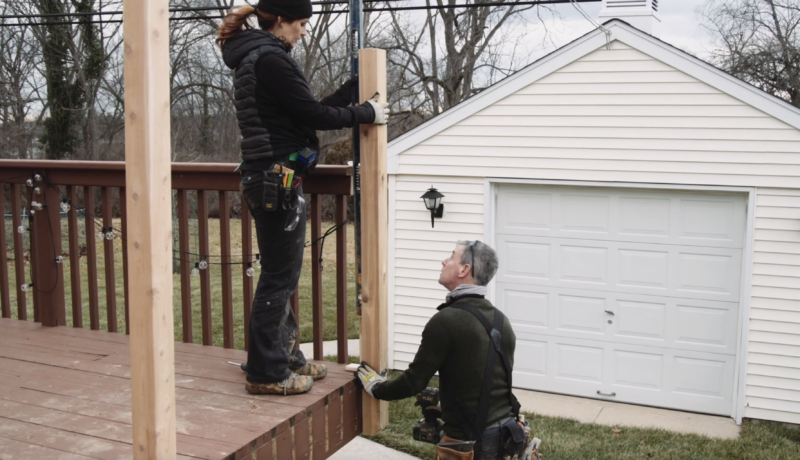Armed with these expert tips for successful remodeling projects, it’s possible to avoid common pitfalls that can either break the bank or break your home renovation spirit.
Home renovations can often be exciting and equally challenging. While transforming a living space is a rewarding experience, it’s essential to navigate the process wisely to avoid unnecessary costs and setbacks. Learn from those pros and DIYers like us who have decades of experience so your projects can be completed on time and on budget, without adding unnecessary stress to your family’s life.
Here are some wise and important steps to consider when embarking on home renovations:
Conduct thorough planning.
Begin with a comprehensive and well-thought-out plan. Clearly define the scope of your renovation project, including specific goals, desired outcomes, and a realistic budget. A detailed plan serves as a roadmap, helping you avoid impulsive decisions and unforeseen expenses.
Make sure you review the plan and incorporate feedback from everyone who will be affected by the plan. Early and frequent communication will go a long way toward successfully navigating remodeling challenges.
Set a realistic budget.
Establish a realistic budget based on your financial capacity and the scope of the renovation.
Consider checking online pricing averages for your area, like through Angi, and obtaining quotes from contractors, factoring in materials, labor costs, and potential contingencies. Make sure that all necessary renovations are covered in the quote. Having a clear budget will guide your decisions and prevent overspending. It’s also important to discuss concerns and maintenance needs with pros so you know how to prevent furnace repairs that could’ve been avoided or even worse major structure problems.
Prioritize essential renovations.
Never overextend your financial picture to complete an aesthetics-driven project. However, sometimes it’s necessary to borrow in order to fix a roof, replace an HVAC system, or upgrade electrical to make sure the home is safe and comfortable.
Identify and prioritize essential renovations that add value to your home. Focus on projects that address structural issues, enhance functionality, or contribute to long-term efficiency. Avoid unnecessary cosmetic changes that may inflate costs without providing substantial benefits.
Consider DIY for easier tasks.
Evaluate whether you can tackle certain tasks yourself to save on labor costs. While complex projects may require professional expertise, simpler tasks like painting, minor repairs, or landscaping might be suitable for a do-it-yourself (DIY) approach. Just be realistic about your skills and the complexity of the task. Successful remodeling is based on realistic expectations.
Anticipate contingencies.
Home remodeling is often full of surprises, but that doesn’t mean it can’t be a successful remodeling project. Factor in contingencies when establishing your budget and timeline. Unexpected challenges, such as hidden structural issues or unforeseen repairs, can wreck the best of plans. Setting aside a contingency fund of around 10 percent of your total budget for home built after 1980—and about 20 percent for old homes—can help cushion the impact of unexpected expenses.
Understand permit requirements.
Building codes are important for successful remodeling, whether you or a pro are doing work around your home. Familiarize yourself with local building codes and permit requirements. Failure to obtain necessary permits can result in fines and delays. Plus, it’s codes were designed to keep you safe, so not following them can result in injury or worse.
Confirm with your local municipality which permits are needed for your specific project and ensure they are secured before starting any work. It’s also helpful to know the process of obtaining code inspections before hiring a pro, just so you know how long the process adds to the building work.
Reuse and repurpose materials.
Consider reusing or repurposing materials from your existing space. Salvaging materials like doors, fixtures, or hardwood floors can save on costs and contribute to a sustainable renovation approach. Upcycling can add unique character to your project without the need for entirely new materials.
We often shop at Habitat ReStore or donate our unneeded materials and furniture. There are tons of unused and barely used items available at deep discounts that benefit others.
Establish a realistic timeline.
Beyond budget, time is one of the biggest constraints when it comes to tackling home successful remodeling. Set a realistic timeline for your renovation project. Rushed projects can lead to mistakes, oversights, and unnecessary costs. Discuss the timeline with your family and your contractor. Build in sufficient time for each phase of the renovation to ensure quality workmanship.
Communicate clearly with contractors.
Many unnecessary expenses and issues can be solved before they happen with frequent in-person communication. Maintain open and clear communication with your contractors throughout the project. Clearly articulate your expectations, ask questions, and address concerns promptly. Miscommunication can lead to mistakes that may require costly corrections. And always read the entire contract and scope of work before signing anything.
Regularly inspect progress.
It’s easy to wait until the end to check a completed remodeling project, or assume that a contractor will address what’s bugging you before they say they are finished. Waiting until the paint is dry isn’t the best time to ask for fixes or changes. It will cost more time and money, and it’s probably spelled out in the contract and scope of work.
Stay actively involved in the renovation process by regularly inspecting the work and addressing concerns as they come up. Being present will prevent concerns from escalating into costly problems later on.
About the Author




